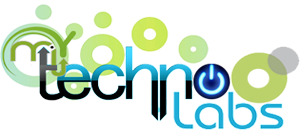LabVIEW, developed by National Instruments, is a graphical programming environment used by engineers to create and test complex measurement, test and control systems. LabVIEW can use thousands of hardware devices to provide data visualization. If you want to use your oscilloscope to measure the voltage and frequency of an electric signal and have the data displayed in LabVIEW, you must first properly connect to it using the National Instruments Measurement and Automation Explorer (MAX) tool. Once your oscilloscope is recognized, you can add it to your LabVIEW project and receive and use data in real time.
Instructions
1. Turn on the oscilloscope, and connect it to your computer.
Instructions
1. Turn on the oscilloscope, and connect it to your computer.
2. Start the Measurement and Automation Explorer tool.
3. Right-click on "Devices and Interfaces," and select the "Create New" option.
3. Right-click on "Devices and Interfaces," and select the "Create New" option.
4. Click on the "VISA TCP/IP Resource" item in the list, and click "Next."
5. Select the "Auto-detect of LAN instrument" option, and click "Next." MAX searches and locates your oscilloscope. Select it, and click "Next."
6. Type a VISA alias that will act as the name of your instrument, and click "Finish." The oscilloscope appears under the VISA TCP/IP Resource section and can be accessed from LabVIEW.
7. Start LabVIEW, and open or create a project.
8. Open the Controls toolbox in LabVIEW, and click on the "I/O" button to display the I/O devices.
9. Click on the "VISA resource" button to display a list of all VISA devices. Note that your oscilloscope is listed under the VISA alias you selected earlier.
10. Drag the oscilloscope VISA resource onto your LabVIEW project to insert it. The device should communicate with LabVIEW properly as long as the connection is active and the device is turned on.
11. Use the oscilloscope to measure the voltage and frequency of your electric signal, and the data will be displayed in LabVIEW.
Sponsored Links
Sponsored Links

No comments:
Post a Comment